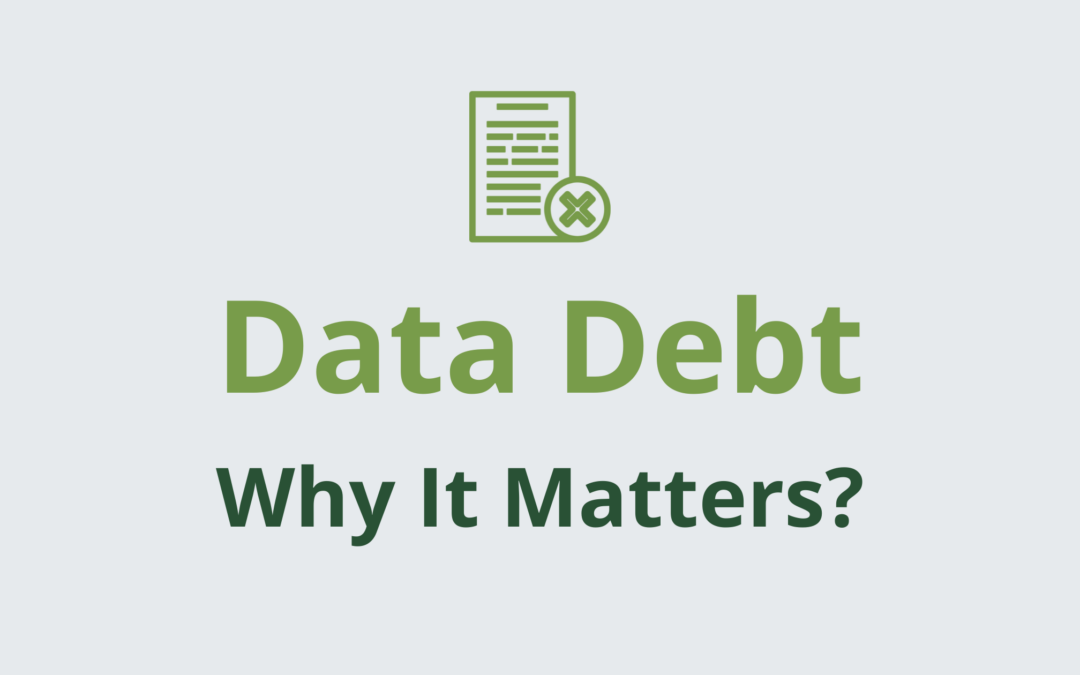Introduction
As ecommerce businesses become more reliant on AI and advanced analytics, the quality of data feeding those systems becomes more critical. Data Debt, which is the accumulation of incomplete, inaccurate, or fragmented data, makes it harder to trust insights, answer basic questions, or scale with confidence. In this post, we’ll define Data Debt, explain where it comes from, and provide a practical guide for addressing it.
What is Data Debt?
Data Debt is similar to technical debt. It builds up quietly through platform migrations, manual processes, and inconsistent data management practices. Over time, this results in data sets that are fragmented, misaligned, or missing key information.
Common issues include:
- Metrics that don’t align across platforms
- Difficulty tracking customer behavior or campaign performance
- Time wasted on manual reconciliation
As more businesses adopt AI and machine learning, these issues become more visible and more costly. Advanced tools can only deliver useful insights if the underlying data is clean, complete, and reliable.
How Data Debt Impacts Ecommerce
Even a small amount of data inaccuracy can lead to major missteps. For example, one client analyzed their customer lifetime value (CLV) using combined data from both DTC and wholesale orders:
- DTC CLV: $135
- Wholesale CLV: $4,000
- Combined CLV: $455
By using this blended figure, they inflated the lifetime value of DTC customers by $320 because wholesale orders have a much higher value. Once the data was segmented correctly, they were able to recalibrate their marketing strategy and spend more effectively.
Where Data Debt Comes From
Data Debt usually develops gradually. Here are the most common sources:
- Platform Changes: Migrations often result in lost or mismatched data. For example, customer IDs might not carry over, making it difficult to track behavior over time.
- Customer Data Issues: Guest checkouts, duplicate records, or inconsistent identifiers lead to incomplete customer profiles and unreliable LTV calculations.
- Campaign Tagging: Without a shared naming convention, agencies and internal teams may tag campaigns inconsistently. This makes long-term performance analysis difficult.
- Product Data: Missing SKUs, bundled products, or deleted records create gaps in reporting. Even something as simple as not including profit margin in the system can distort performance metrics.
- Order Data: This is often affected by errors in discount codes, tax tracking, or separating wholesale from DTC orders. These discrepancies skew AOV and overall profitability insights.
- Google Analytics 4 Implementation: Events not firing correctly or firing multiple times has been a persistent issue since GA4 became the standard in July of 2024.
How to Clean Up Data Debt
Fixing Data Debt doesn’t have to be overwhelming. A structured approach can make the process manageable:
- Audit Your Data
Identify where inconsistencies exist—duplicate entries, incomplete fields, or mismatched metrics. - Standardize Processes
Set clear rules for naming conventions, data entry, and customer segmentation. Align internal teams and any external partners. - Use the Right Tools
Automate repetitive tasks like deduplication and campaign tagging. Look for tools that integrate well across platforms and support real-time validation. - Test and Validate
After cleanup, run key reports and compare against historical trends. Adjust as needed to ensure accuracy and reliability.
Example:
One ecommerce client cleaned up inconsistent campaign tagging and discovered their reported marketing spend had been overstated. After corrections, they:
- Reallocated $50,000 to better-performing ad channels
- Reduced reporting errors by 25%
Conclusion
Data Debt slows down decision-making and limits the effectiveness of tools like AI and machine learning. But it’s fixable. By auditing your data, standardizing processes, and using the right tools, you can improve data quality and unlock better performance insights.

